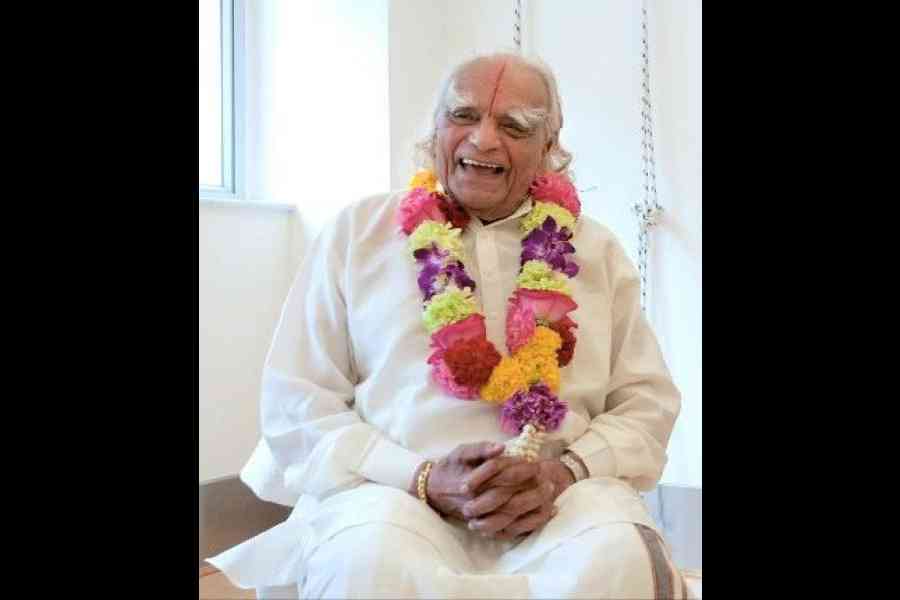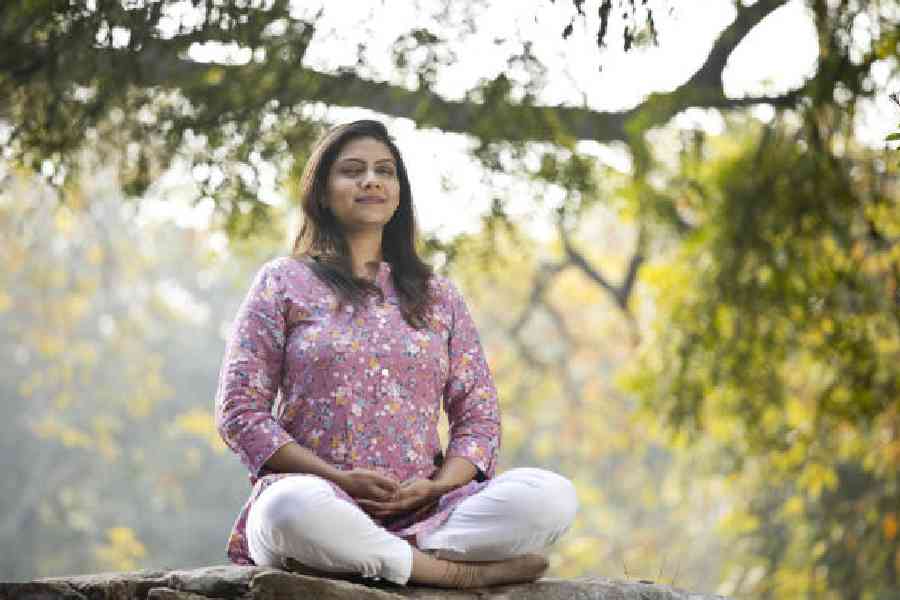I am a student of Ramamani Iyengar Memorial Yoga Institute Pune for the past 13/14 years and have been studying/practising yog for the last 21 years. Hardly any significance or matter noteworthy as yog is an experience of many a lifetime. As guru Prashant Iyengar says, learn and practise yog, not yoga, and not with fervour or for benefits but for transmuting transmigrating conditions. Whatever is learnt now is just like a run-up to yog. We are just scratching the surface of the word 'yog'. It is best when a student of yog continues to be a student forever of yog. The path of yog comes in everyone’s lifetime sooner or later.
Prashantji’s educative classes of two hours begin with precepts of the class before the prayers and are followed by asanas. As sir says, the class starts actually before the class. The essence is in those few lines which Prashantji discloses before the invocations. To comprehend is our duty, purpose and privilege under his guidance. There is an interplay and intermingling of the breath, mind, and body deeply in the laying, doing, conducting, staying of the asanas. There are quite a few times when Prashantji gives us a break from the physical enduring asanas to sit to listen to gyan on yog, gyan on life, gyan of everything as a student of yog must ponder upon. Responses purposes, creativity, kriyas of breathing in asanas, etc. Doership, knowership, and endurership of the entities of the body, mind and breath. There is so much to absorb, practise, learn, unlearn, do, undo through the artwork of yog.
The founder of Iyengar yoga
Guruji BKS Iyengar, the founder of Iyengar yoga, was a student of Yogacharya Thirumalai Krishnam Acharya. However, it was Guruji's observations and exposures through which he taught himself and learnt yoga on his own. Guruji was born on December 14, 1918 in Karnataka during the epidemic of influenza. Born in a poor family, a sick child since birth, he suffered a lot and was disproportionate in size with a large head and skinny body. Not only was he born with influenza but got inflicted with tuberculosis, typhoid and malaria. He survived and made yoga his life. The institute at Pune is named after his wife, Srimathi Ramamani Iyengar. Guruji died on August 20, 2014 in Pune.

Guruji BKS Iyenger
Yogacharya Guruji BKS Iyengar has been postulated with many awards, titles and honours in yoga. Today, Iyengar yoga is taught in all the United Nations countries. Guruji has written many books, some of them that I can list here are Light on Yoga, Light on Pranayama, Art of Yoga, Light on Ashtanga Yoga, Tree of Yoga, Astadala Yoga Mala, Light on Yoga Sutras, Yoga for Sports, and so on.
What really is Iyengar yoga?
Iyengar yoga, according to a brief definition, is a type of Hatha yoga focusing on the correct alignment of the body, making use of straps, wooden blocks and other objects as aids to achieving the correct posture. So, what really is Iyengar yoga? Is it just this? Is it a brand? Or is it the yoga that Guruji practised with Dharma? The last one is truly what Iyengar yoga is, as I have been practising, being a part of the Iyengar family.
I had the fortune to be a part of Rama Iyengar Yoga Memorial Institute (RIYMI) Pune around 2010-2011. A new enrolment, I recall sometimes after my class, I used to stay back just to see the enigma called Guruji, observe the ongoing advanced class, being conducted by Late Geetaji, Guruji's oldest child, and the whole place looked like an arena with two masters. Guruji must have been 92/93 and Geetaji in her mid-60s. About 100-plus students filled the entire yoga hall.
Iyengar yoga is more a system than just a brand that the world knows. Guruji never had any arrogance to coin his style of yoga as Iyengar yoga though his yoga was getting popular from the 1960s. His students wished it to be named after him. To give a name to the form of this style of yoga that they were learning, this approach of using props like ropes, bricks, belts, pillows, bolsters, different kinds of wooden benches, stools, bridges, formally Iyengar yoga was born. It spread rampantly, with Guruji being invited to institutions, and universities, to perform all over the globe.
The magic of Iyengar yoga
What’s the novelty or magic of doing Iyengar yoga? I have faced this question so many times. My answer is: Iyengar yoga is that system of yoga which can be done by children, teenagers, adults, and the aged. Everyone can benefit. Iyengar yoga is for the sportsman, the politician, the homemaker, the sick, the not-so-abled... for anyone and everyone. The use of the props as support is to enable the practitioners to experience ethical spiritual practices, definitely physical alignments as much as touching the mental states. Iyengar yoga asanas consist of sequencing timing with perfect instructions.
There are many unique aspects of Guruji’s teachings that caught the world's attention from the 1960s to 2014. In Guruji’s own words, yoga grew like a banyan tree and from the West its shoots found roots back in the Indian soil.
